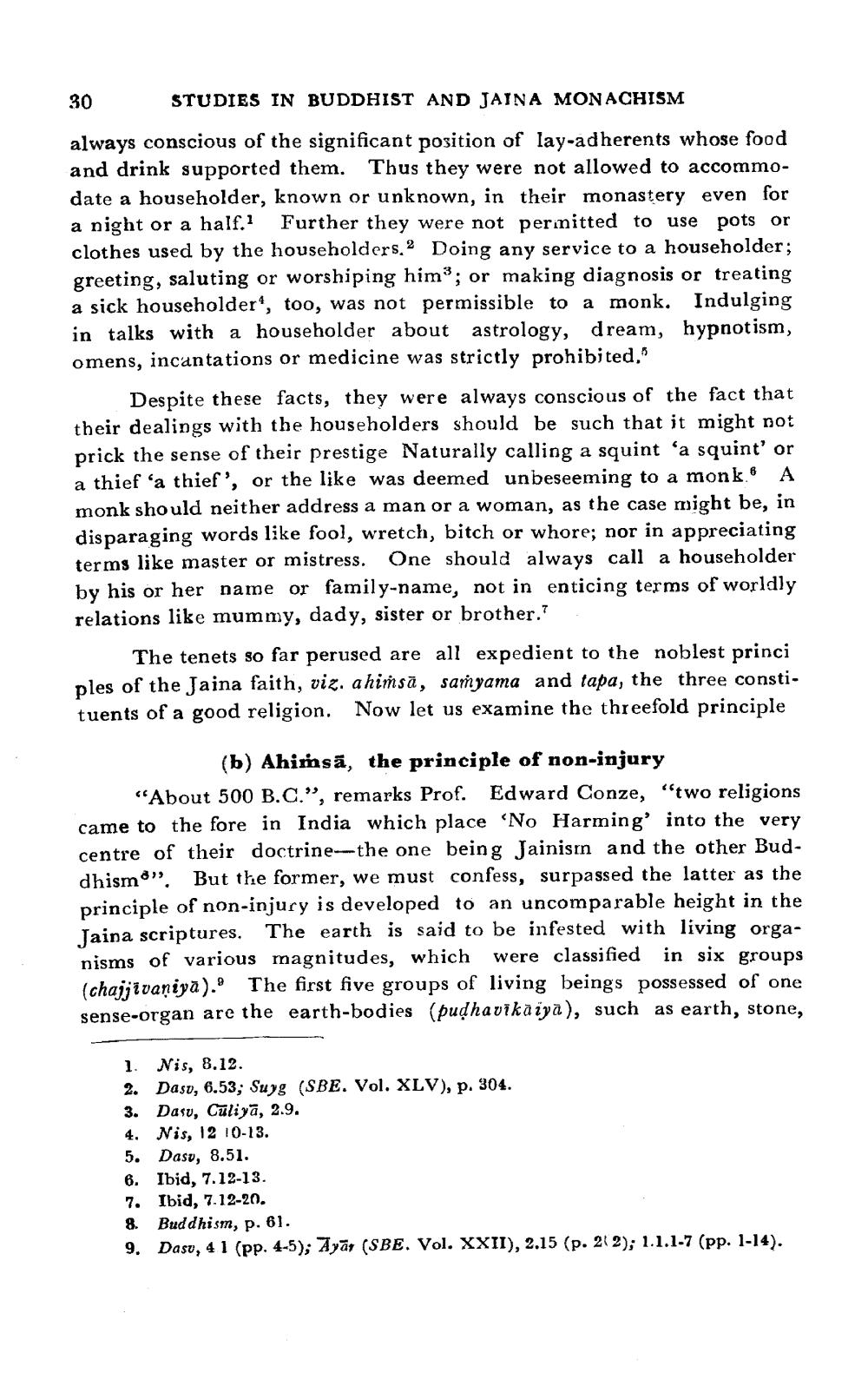________________
30
STUDIES IN BUDDHIST AND JAINA MONACHISM
always conscious of the significant position of lay-adherents whose food and drink supported them. Thus they were not allowed to accommodate a householder, known or unknown, in their monastery even for a night or a half. Further they were not per nitted to use pots or clothes used by the householders.2 Doing any service to a householder; greeting, saluting or worshiping him?; or making diagnosis or treating a sick householder", too, was not permissible to a monk. Indulging in talks with a householder about astrology, dream, hypnotism, omens, incantations or medicine was strictly prohibited."
Despite these facts, they were always conscious of the fact that their dealings with the householders should be such that it might not prick the sense of their prestige Naturally calling a squint 'a squint' or a thief 'a thief', or the like was deemed unbeseeming to a monk. A monk should neither address a man or a woman, as the case might be, in disparaging words like fool, wretch, bitch or whore; nor in appreciating terms like master or mistress. One should always call a householder by his or her name or family-name, not in enticing terms of worldly relations like mummy, dady, sister or brother.?
The tenets so far perused are all expedient to the noblest princi ples of the Jaina faith, viz. ahimsā, samyama and tapa, the three constituents of a good religion. Now let us examine the threefold principle
(b) Ahimsā, the principle of non-injury "About 500 B.C.", remarks Prof. Edward Conze, "two religions came to the fore in India which place 'No Harming' into the very centre of their doctrine--the one being Jainism and the other Buddhism". But the former, we must confess, surpassed the latter as the principle of non-injury is developed to an uncomparable height in the Taina scriptures. The earth is said to be infested with living organisms of various magnitudes, which were classified in six groups (chajjivaniya). The first five groups of living beings possessed of one sense-organ are the earth-bodies (pudhavikā iya), such as earth, stone,
1. Nis, 8.12. 2. Dasv, 6.53; Suyg (SBE. Vol. XLV), p. 304. 3. Dasu, Culiyā, 2.9. 4. Nis, 12 10-13. 5. Dasv, 8.51. 6. Ibid, 7.12-13. 7. Ibid, 7.12-20. 8. Buddhism, p. 61. 9. Dasu, 41 (pp. 4-5); Ayar (SBE. Vol. XXII), 2.15 (p. 212); 1.1.1-7 (pp. 1-14).




